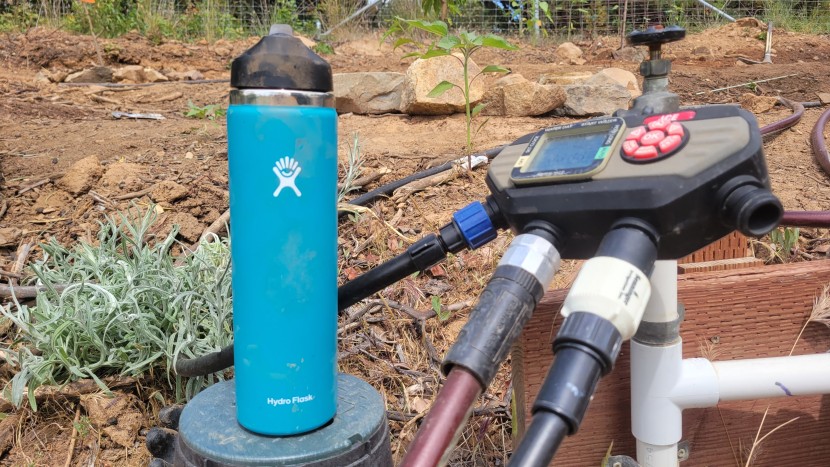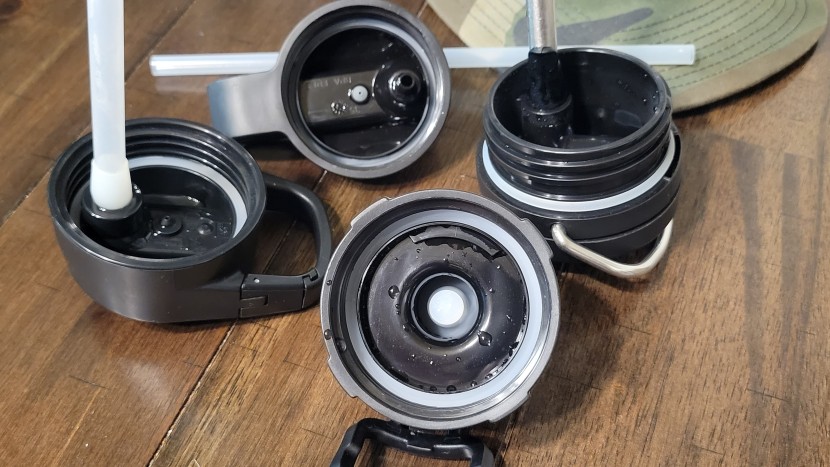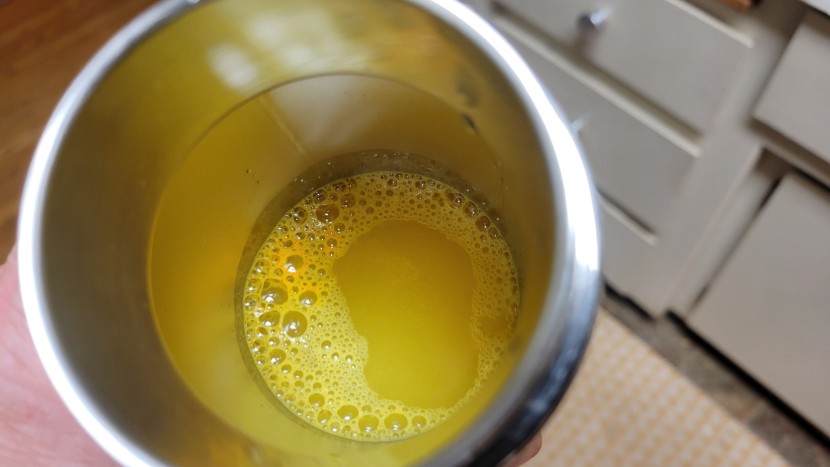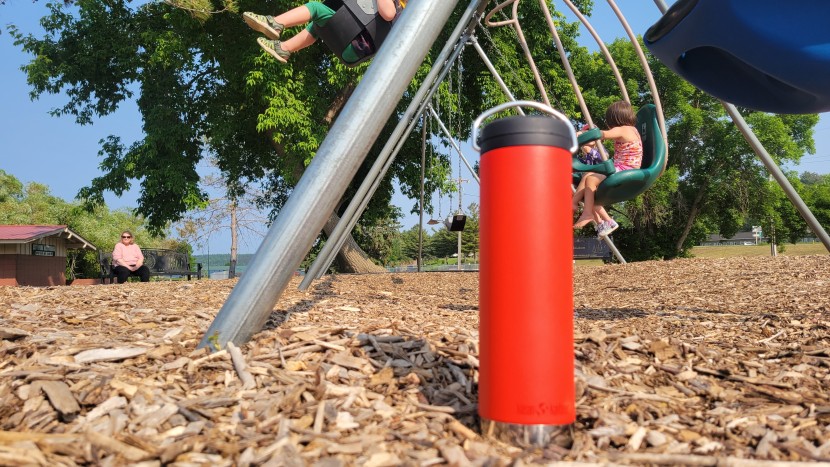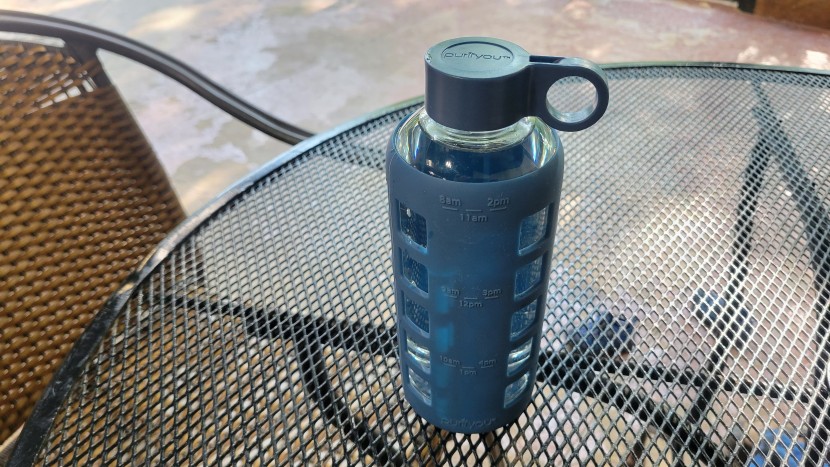Finding the right water bottle for each activity requires lots of real-world testing. We tested these water bottles by using them daily, taking them on road trips, using them at the office, and bringing them on weekend adventures. They also accompanied us on more mundane outings where hydration is necessary, like days at work, trips to the gym, and yoga class. Through all of this travel and use, we filled these bottles from municipal faucets, springs and wells, and rivers and streams around the world. We found out the hard way when they leaked.
Closure
No one likes a leaky bottle. We designed this controlled test to determine which bottles could be counted on as leakproof and which may leak a little (or a lot) if thrown in a bag or left on their side. We filled the bottles with blue-dyed water, closed them tight, and left them on a white sheet of paper on their side for 24 hours. In the end, it was clear to see which bottles formed a perfect seal and which ones were not leakproof. We also measured the utility of the closure and how easy it was to operate within a variety of lid shapes, sizes, and modalities.
Taste
While most manufacturers are now ensuring that their materials are free from bisphenols (BPA, etc.), water from a plastic bottle can still taste like plastic if left in the car on a hot day. For this metric, we measured how likely the materials are to leach plastic taste into the water bottle. We filled each bottle with 100 degree F water, let it sit for 30 minutes, and then tasted with a couple of fine-tuned tongues to determine whether or not any taste leached from the materials into our liquid.
Ergonomics
This metric encompasses all the physical attributes of the bottle other than durability. It was formally called “Ease of Use” and was expanded to address aesthetics and application. We carried the bottles around by hand, in bags, in planes, vehicles, and bikes. We used them at home, in the office (coffee shop), at the gym, and on trails, both on day hikes and longer backcountry treks. We noted the attributes of each bottle that determined whether or not they were easy to carry, fill, wash, and drink from and whether or not they looked good doing it.
Material Quality
This metric was formerly known as “Durability”. It was changed to distinguish between lower-quality (plastic) and higher-quality (metal/glass) materials. Bottles were analyzed for any materials, design, or features that contribute to quality and longevity. The highest scores were given to bottles that are both constructed of high-quality materials and have features that contribute to longevity.

